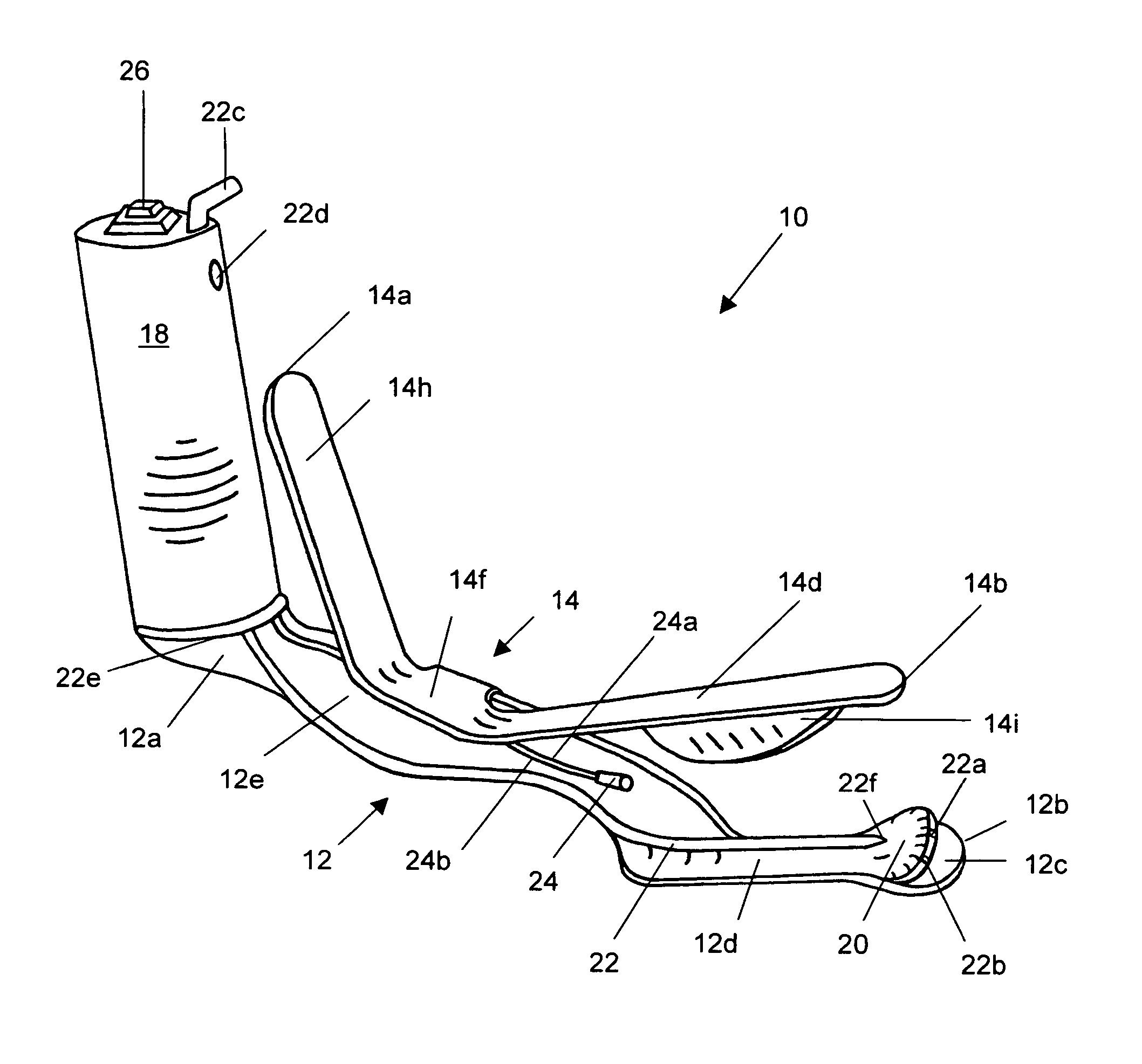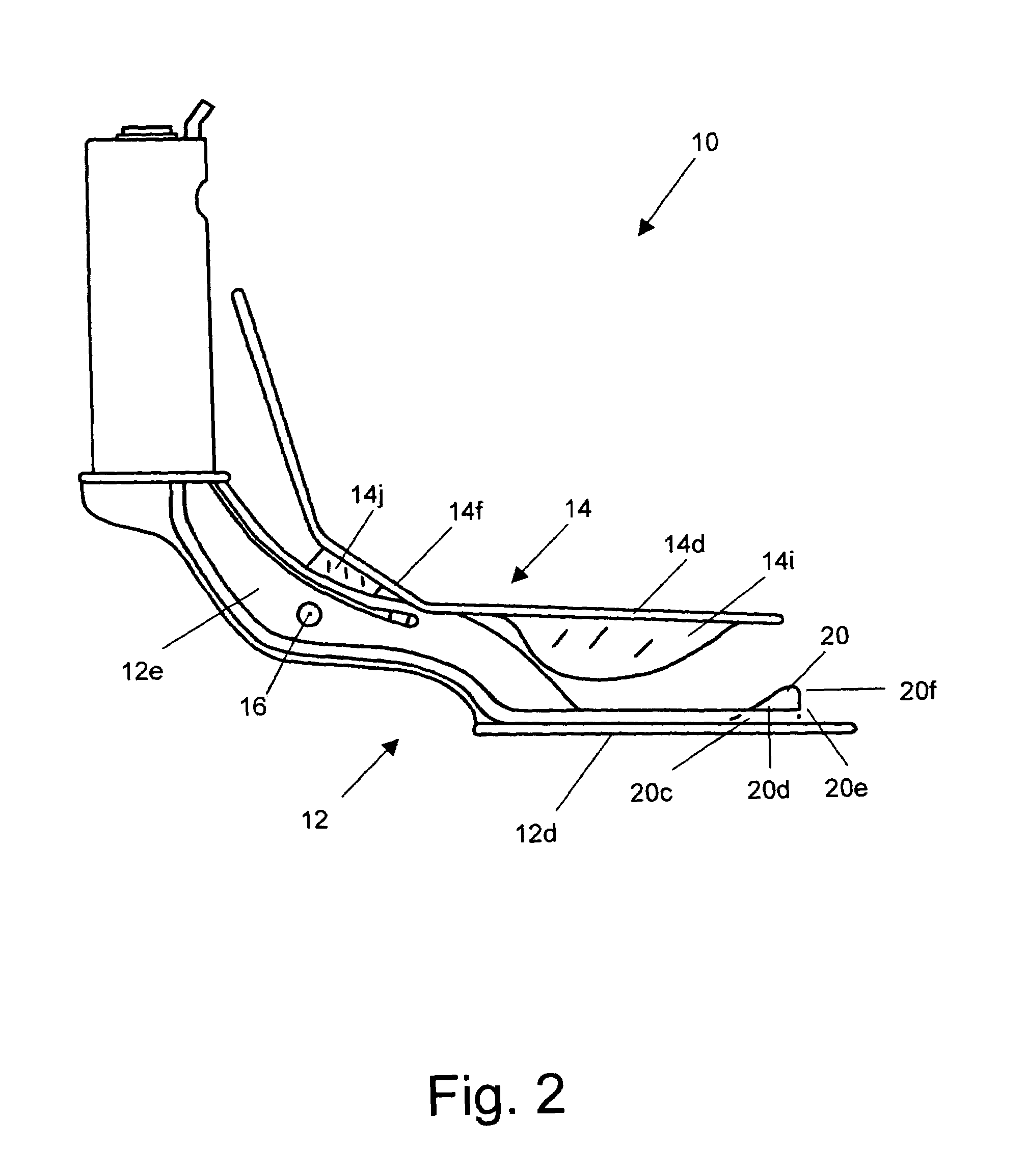Dual blade laryngoscope with esophageal obturator
a laryngoscope and esophageal obturator technology, applied in the field of dual-bladed laryngoscopes, can solve the problems of inability to intubate patients safely, and inability to operate properly,
- Summary
- Abstract
- Description
- Claims
- Application Information
AI Technical Summary
Benefits of technology
Problems solved by technology
Method used
Image
Examples
Embodiment Construction
[0018]1. Preferred Embodiment.
[0019]The present invention is directed to a dual-bladed laryngoscope adapted for blocking the opening to the esophagus and preventing a tube from entering the esophagus during intubation. The laryngoscope preferably includes a ramp for guiding the intubation tube into the trachea. Another aspect of the invention includes a hinge connection between the two blades, where one side of the two blades are pivotally connected with the other side open so that an intubation tube may remain in place while the laryngoscope is removed. The intubation tube passes through the open side of the laryngoscope. The laryngoscope may further include a tongue guard for holding the tongue out of the way when forming a passageway through which to guide an intubation tube, a light for illuminating the passageway thus formed, and an integrated suction tube operated by a finger of the hand holding the laryngoscope.
[0020]With reference to FIG. 1, one embodiment of a laryngoscope ...
PUM
 Login to View More
Login to View More Abstract
Description
Claims
Application Information
 Login to View More
Login to View More - R&D
- Intellectual Property
- Life Sciences
- Materials
- Tech Scout
- Unparalleled Data Quality
- Higher Quality Content
- 60% Fewer Hallucinations
Browse by: Latest US Patents, China's latest patents, Technical Efficacy Thesaurus, Application Domain, Technology Topic, Popular Technical Reports.
© 2025 PatSnap. All rights reserved.Legal|Privacy policy|Modern Slavery Act Transparency Statement|Sitemap|About US| Contact US: help@patsnap.com



